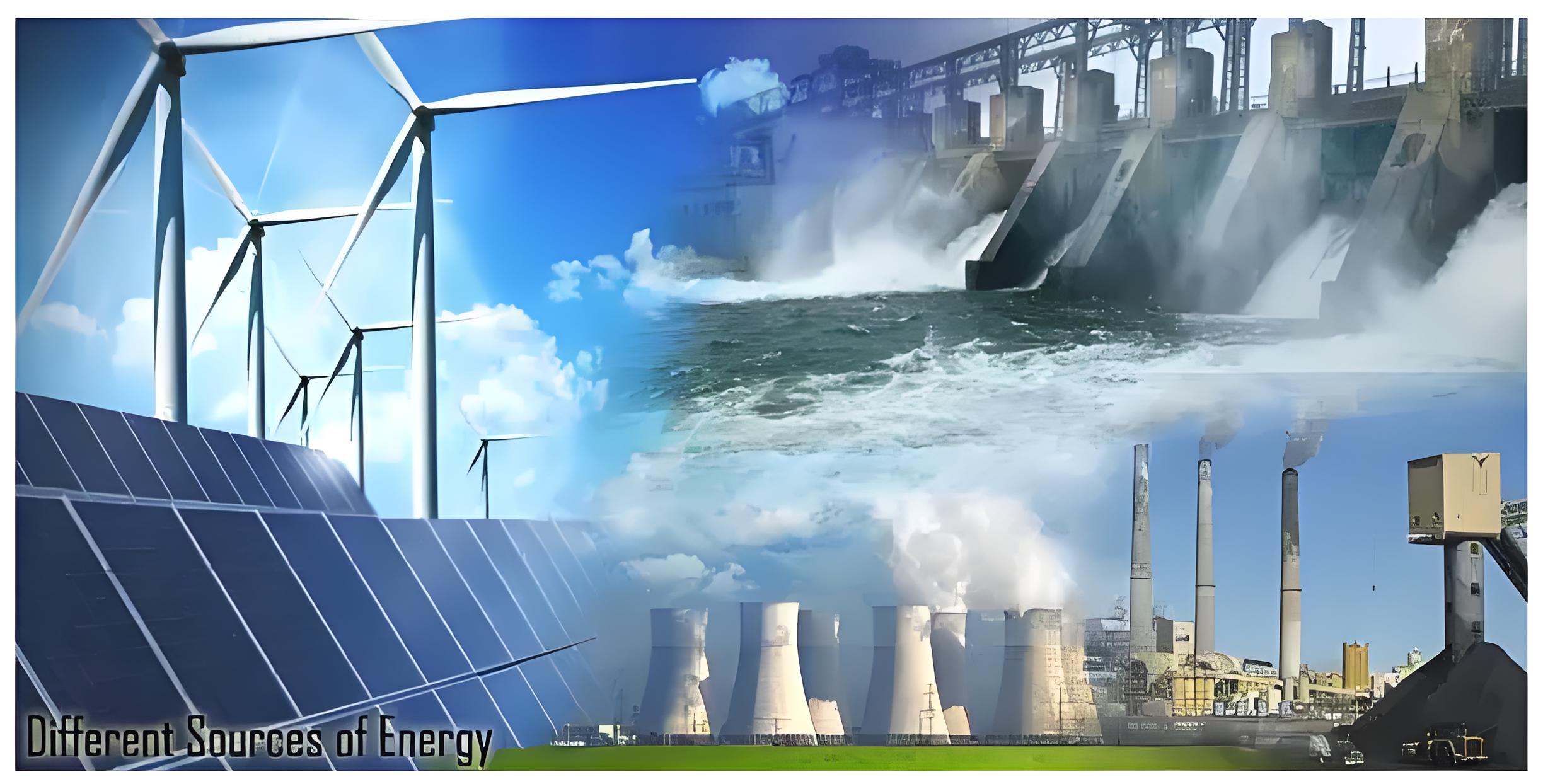What is Electric Power Generation ?
What is Electric Power Generation ?
Power Generation Definition
The power system has three main parts: generation, transmission, and distribution. This article focuses on power generation, where one form of energy is converted into electrical energy. Electrical energy is produced from various natural sources.
Energy sources are classified into renewable and non-renewable types. Currently, most electrical energy is generated from non-renewable sources like coal, oil, and natural gas.
However, non-renewable sources are limited. We must use them carefully and seek alternative or renewable sources.
Renewable sources include solar, wind, water, tidal, and biomass. These are environmentally friendly, free, and unlimited resources. Let’s learn more about these renewable sources.
Renewable Sources
Renewable sources like solar, wind, hydro, tidal, and biomass are environmentally friendly and unlimited.
Solar Power Generation
Solar energy is a great alternative for power generation. There are two main ways to generate electricity from sunlight.
We can create electricity directly by using photovoltaic (PV) cell. The photovoltaic cell is made up of silicon. Many cells are connected in series or parallel to make a solar panel.
We can produce heat (solar thermal) with the help of mirrors in the sunlight, and we use this heat to convert water into steam. This high-temperature steam rotates the turbines.
Advantages of Solar Energy System
The transmission cost is zero for a stand-alone solar system.
Solar electricity generation system is environment-friendly.
The maintenance cost is low.
It is an ideal source for remote locations that cannot link to the grid.
Disadvantages of Solar Energy System
Initial expenses are high.
Require large area for bulk production.
Solar electricity generation system is weather-dependent.
Solar energy storage (battery) is costly.

Wind Energy System
Wind turbines are used to convert wind energy into electrical energy. Wind flows due to temperature changes in the atmosphere. Wind turbines turn wind energy into kinetic energy. The rotating kinetic energy rotates the induction generator, and that generator converts kinetic energy into electrical energy.
Advantages of Wind Energy System
Wind energy is an unlimited, free and clean source of energy.
The operating cost is almost zero.
A wind electricity generating system can generate power in a remote location.
Disadvantage of Wind Energy System
It cannot produce the same amount of electricity at all time.
It needs a big open area.
It makes noise.
The construction process of a wind turbine is expensive.
It gives lower electricity output.
It poses threats from flying birds.
Hydro Energy System
The power obtained from river or ocean water is called hydropower. Hydro power plants are work based on the gravitational effects. Here we store water in a dam or reservoir. When we allow falling the water, the movement of this water as it flows downstream towards the penstock causes kinetic energy that rotates the turbines.
Advantages of Hydro Energy System
It can be used in the service instantly.
After this process, water can be used for irrigation and other purposes.
Dams are designed for an extended period and so it can contribute to the generation of electrical energy for many years.
Running and maintenance costs are low.
No fuel transportation is required.
Disadvantages of Hydro Energy System
The initial cost of a hydel power plant is high.
Hydropower plants are located in the hilly area, and it is very far from the load. So, they require a long transmission line.
The construction of dams can flood towns and cities.
It is also weather-dependent.
Coal and Nuclear Power
Coal Energy System
A thermal power plant produces electricity by burning coal in the boiler. Heat is used to convert water into steam. This high pressure and high-temperature steam flowing into the turbine spins a generator to produce electrical energy.
After it passes through the turbine, the steam gets cooled in a condenser and reuse in the boiler to generate steam again. Thermal power plant works according to Rankine cycle.
Advantages of Coal Energy System
Coal is cheap.
It has less initial cost compared to renewable power plants.
It requires less space than a hydel plant.
We can construct a thermal power plant at any place because coal can be transport to the plant irrespective of its location.
Construction and commissioning of thermal power plants take lesser time than a hydel plant.
Disadvantages of Coal Energy System
Coal is a non-renewable energy source.
The operating cost is high and variable according to the price of fuel.
It pollutes the atmosphere due to smoke and fumes.
It requires a huge quantity of water.
Nuclear Energy System
The working of nuclear power is almost the same as a thermal power plant. In a thermal power plant, coal is used in the boiler to produce heat.
In a nuclear power plant, uranium is used in the nuclear reactor to generate heat. In both power plants, heat energy gets converted into electrical energy.
1kg of uranium can produce energy same as the energy produced by burning of 4500 tonnes of coal or 2000 tonnes of oil.
Advantages of Nuclear Energy System
It requires less space than a thermal power plant and a hydropower plant.
It can produce an unusually high amount of electrical energy from a single plant.
It does not emit CO2
A nuclear power plant needs a small quantity of fuel.
Disadvantages of Nuclear Energy System
It has a high initial construction cost.
It has high operating and maintenance costs.
It has radioactive waste.
It has a high risk of radio-activity and explosion.
The Electricity Encyclopedia is dedicated to accelerating the dissemination and application of electricity knowledge and adding impetus to the development and innovation of the electricity industry.













